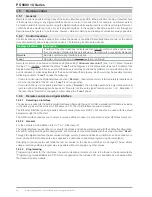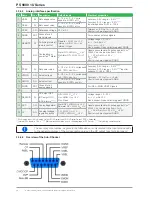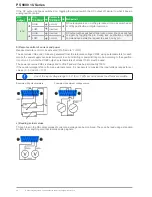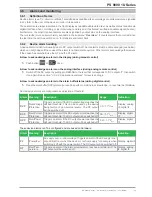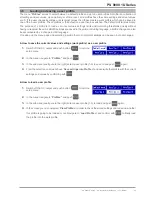
52
PS 9000 1U Series
PS 9000 1U Series • DC Laboratory Power Supply • User Manual
4.3.2.1 Set values
►
How to calibrate the DC output voltage
1.
Connect a multimeter to the DC output. Connect a load and
set it to approx. 5% of the nominal current of the power supply
as load current, in this example let’s use 4 A.
2.
Enter the setup menu with
, then push
. In the submenu navigate to “
Calibration
” using the
arrow buttons. In the next screen select “
Voltage
” and then “
Output value
” and confirm with
. The
power supply will then switch the DC output on.
3.
In the next screen the device will set a certain output voltage and start to measure it (
U-mon
). Simply confirm
here with
.
4.
After this, the device requests you to enter the measured output voltage from the multimeter at
Measured
value:
. Enter it using the right-hand rotary knob, just like would adjust a set value. Assure yourself the value
is correct and submit with
.
5.
Repeat steps 3. and 4. for the next three calibration steps (total of four steps).
Should the externally measured value be too different from the internally measured value (
U-mon
), then the cali-
bration procedure will fail and the parameter can not be readjusted by the user.
► How to calibrate the DC output current
1.
Set the load to approx. 102% nominal current of the PS device, for the sample model with 100 A this would
be 102 A.
2.
Enter the setup menu with
, then push
. In the submenu navigate to “
Calibration
” .using the
arrow buttons. In the next screen select “
Current
” and then “
Output value
” and confirm with
. The
power supply will then switch the DC output on.
3.
In the next screen the device will set a certain current limit, being loaded by the load or sink, and start to
measure the output current (
I-mon
). Simply confirm here with
.
4.
After this, the device requests you to enter the output current, which you are measuring with the shunt, at
Measured value:
. Enter it using the right-hand rotary knob, just like would adjust a set value. Assure yourself
the value is correct and submit with
.
5.
Repeat steps 3. and 4. for the next three calibration steps (total of four steps).
Should the externally measured value be too different from the internally measured value (
I-mon
), then the cali-
bration procedure will fail.
In case you are generally using the remote sensing feature, it is recommended to also readjust this parameter
for best results. The procedure is identical to the calibration of voltage, except for it requires to have the sensing
connector (Sense) on the rear to be plugged and connected with correct polarity to the DC output of the PS.
► How to calibrate the DC output voltage for remote sensing
1.
Connect a load and set it to approx. 3% of the nominal current of the power supply as load current, in this
example ~3 A. Connect the remote sensing input (Sense) to the load with correct polarity.
2.
Put external multimeter in DC connection on the load.
3.
Enter the setup menu with
, then push
. In the submenu navigate to “
Calibration
”. Push
again. In the next screen select “
Sense volt.
”
then “
Output value
“and confirm twice with
. The power
supply will then switch the DC output on.
4.
In the next screen the device will set a certain output voltage and start to measure it (
U-mon
). Simply confirm
here with
.
5.
After this, the device requests you to enter the measured sensing voltage from the multimeter at
Measured
value:
. Enter it using the right-hand rotary knob, just like would adjust a set value. Assure yourself the value
is correct and submit with
.
6.
Repeat steps 4. and 5. for the next three calibration steps (total of four steps).
Summary of Contents for PS 9080-100 1U
Page 2: ......

